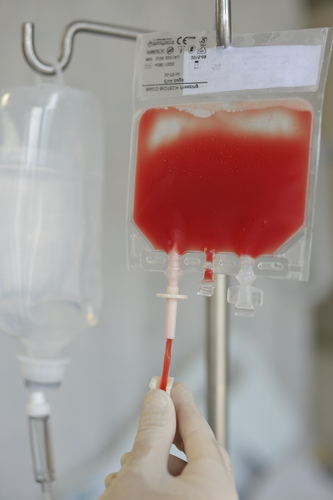Using Stem Cells from Closely Matched Siblings Increases Sickle Cell Transplant Success, Study Finds
Written by |

Using stem cells from a closely matched sibling increases the chance that a sickle-cell disease transplant will succeed, and the patient survive, a study reports.
The study, “Sickle cell disease: an international survey of results of HLA-identical sibling hematopoietic stem cell transplantation,” was published in the journal Blood. It involves hematopoietic cell transplantation (HCT), whose chance of success increases when a donor and recipient share components of proteins called HLA.
“Sickle cell disease and transplant physicians alike debate the burden of morbidity from a chronic disease and mortality from the disease, vs. the curative option with transplantation and the risk for transplant-related complications and mortality,” Eliane Gluckman, MD, and her colleagues at the Eurocord Hospital Saint Louis in Paris said in a news release.
Although advances in therapy can prevent complications of SCD, not everyone is able to gain access to the care. At the moment, hematopoietic cell transplantation is the only way to cure SCD. HCT involves putting blood-forming cells from one person into another.
Transplantation doesn’t occur as often as it could, however. To start with, it requires an HLA-matched donor. In addition, many patients are unaware of the benefits of transplantation.
HLAs are located on the surface of white blood cells and other tissues. HLA matching is used to select a compatible donor to the patient. A close match increases the chance of a successful procedure and decreases the risk of graft-versus-host (GVHD) disease after the transplant, preventing the recipient’s immune system from attacking the donor’s transplant material as an invader.
HLA–identical sibling transplantation with stem cells from bone marrow or umbilical cord blood can increase the chance of hematopoiesis, or transplant recipients creating the blood cell components they need for survival.
Doctors recommend that young SCD patients with an HLA–identical sibling have HCT as early as possible. They usually recommend against an alternative form of transplantation unless disease severity markers are present.
Gluckman’s research team looked at HLA–identical sibling transplant outcomes in SCD worldwide.
Their analysis covered 1,000 HLA-identical sibling transplants between 1986 and 2013 whose cases were reported to the European Blood and Marrow Transplant, Eurocord and the Center for International Blood and Marrow Transplant Research.
The primary measuring stick was event-free survival, defined as being alive without transplant failure. The median age at transplantation was 9 among the 846 children involved, and 20 among the 154 adults. All patients were followed an average of five years.
Most patients — 873, or 87% — received a myeloablative conditioning regimen, or the destruction of their bone-marrow cells with chemotherapy or radiation before transplantation — to reduce the chance their body would reject the transplant.
The other 125 patients, or 13%, received a reduced-intensity conditioning regimen before transplantation that also was aimed at helping the transplant succeed.
Both procedures aim to decrease transplant-related complications, toxicity and patient mortality.
The sources of stem cells that the transplant patients received included bone marrow — 839 patients, or 84%; peripheral blood — 73 patients, or 7%; and umbilical cord blood — 88 patients, or 9%.
“Our data support early referral for transplantation when an indication is identified, so that donor search and transplantation of bone marrow, peripheral blood or banked cord blood from an HLA–identical sibling can be initiated in a timely manner,” the researchers wrote.
The five-year event-free survival rate of the transplant patients was 91.4% and their overall survival rate 92.9%. Event-free survival was lower as patients’ age increased at transplantation and higher for transplantations performed after 2006.
Twenty-three patients experienced transplant rejection, and 70 patients, or 7%, died, with the most common cause of death being infection.
“Transplantation of grafts from HLA–identical siblings offers excellent 5-year survival and our results confirm this is an accepted treatment for severe sickle cell disease worldwide,” the researchers wrote. “Nevertheless, it is also important to study the effects of transplantation on the long term and to develop prospective trials of comparable patient cohorts to determine the relative merits of transplantation vs. supportive care, especially in older patients with severe sickle cell disease.”





